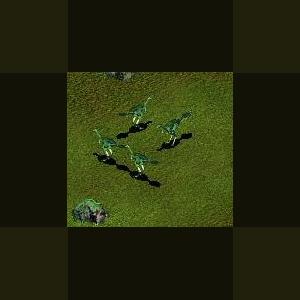About This File
Unenlagia
Unenlagia (meaning "half-bird" in Latinized Mapuche) was a genus of theropod dinosaur of the family Dromaeosauridae. Unenlagia, which lived in South America during the Late Cretaceous, was a member of the strange and extremely bird-like Gondwanan sub-family of dromaeosaurs called unenlagiines, and was closely related to dinosaurs such as Buitreraptor and Neuquenraptor (which might be the same species as Unenlagia). Makovicky et al. suggested that the 'flying raptor' Rahonavis is also a member of this group, which would mean that either Unenlagia is secondarily flightless, having evolved from flying, Rahonavis-like ancestors, or that bird-like flight evolved at least twice. Norell et al. in 2006 also found Rahonavis to be the sister taxon of Unenlagia.
Unenlagia was very birdlike itself. Novas and Puerta found its pelvic region to be very similar to that of the early bird Archaeopteryx. The shoulder girdle of Unenlagia also shows adaptations for flapping. At 2 meters (6.6 ft long), Unenlagia was probably too big to fly; thus either it evolved from flying ancestors, or Rahonavis (if an unenlagiine) evolved flight from adequately adapted (but too large; see also exaptation) dromaeosaurs independently of the Archaeopteryx lineage, at a time when other bird lineages were already undergoing vigorous adaptive radiation.
The genus Unenlagia has been assigned two species: U. comahuensis, the type species described by Novas and Puerta in 1997, and U. paynemili, described by Calvo et al. in 2004.



Recommended Comments
There are no comments to display.
Create an account or sign in to comment
You need to be a member in order to leave a comment
Create an account
Sign up for a new account in our community. It's easy!
Register a new accountSign in
Already have an account? Sign in here.
Sign In Now